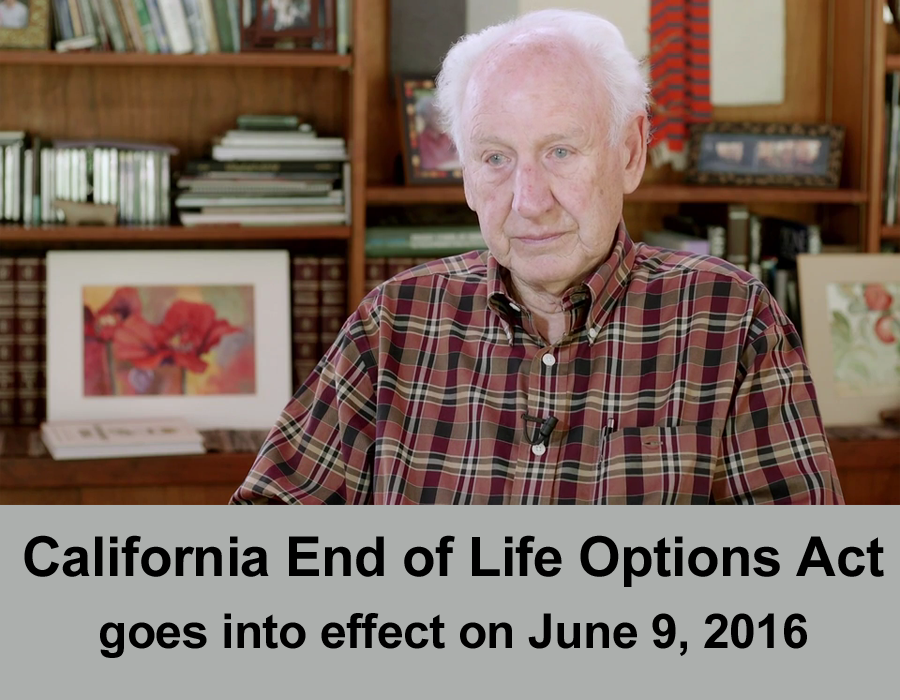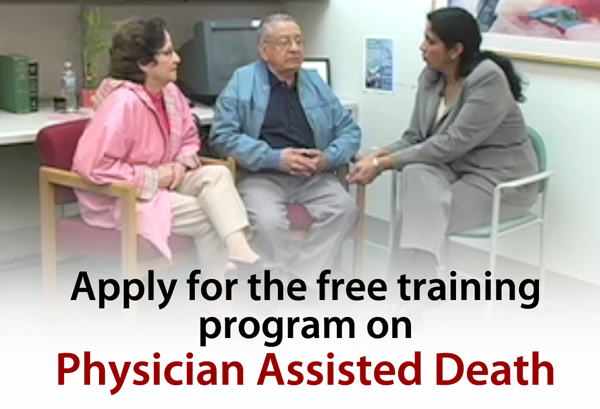Our stance on the issue of Physician Assisted Death is one of studied neutrality i.e. we are neither for nor against it. However, we are anything but neutral on the issue of the profound suffering seriously ill patients experience. We are deeply cognizant of the fact that some seriously ill patients experience profound distress and refractory symptoms despite maximal palliative care. A few of these patients may approach their trusted clinicians to ask for aid in dying. We want to make sure that all clinicians are skilled at responding gently and thoughtfully to patient requests and alleviate their suffering.
While most seriously ill patients will neither seek nor be eligible for aid in dying, it behooves all providers to listen carefully to the concerns of the patient and family and support them as best as we can. For the few who are eligible to receive lethal medications to hasten their death, this time of their life will likely be a crisis with great physical and emotional suffering. Others will be morally conflicted. Their family members will also experience tremendous stress. They will require support every step of the way. Family members will need help and support after the patient dies.
Research shows that seriously ill patients suffer tremendously due to unmet bio-psycho-socio-spiritual care needs during all stages of their illness trajectory. No patient moves from a state of “zero suffering” to “intractable suffering” overnight. For many, their suffering is under-treated or untreated and escalates over days, weeks, months, and even years. Some reach an intractable point of profound distress. This suffering can be effectively alleviated with early institution of palliative care for all seriously ill patients.
When their symptoms are not palliated appropriately, patients become extremely worried about their current and unbearable distress becoming even worse as they get closer to the end. They are often seeking to gain some control over their fate and how they die. They worry about loss of dignity that may come with being helpless and in severe pain or distress. For the few patients who are eligible for PAD and choose to do this, having a lethal prescription may be an escape hatch they want for themselves, even if they may never use it. As patients travel through these stressful times, their clinicians need to navigate the conversations and guide them skillfully and help them make plans for the end of their lives. .
***************************************************************
The story of Ms. Clark illustrates some of these communication issues.This is a case study written and produced by Dr. Periyakoil to serve as a teaching tool. Any resemblance a real-life situation or any individuals is entirely co-incidental.
Story of Ms. Jane Clark
Ms. Jane Clark is a 61 y.o. librarian with a Amyotrophic Lateral Sclerosis ( Lou Gehrig’s Disease). She lives alone and works at the local library. David is her only son and her proxy decision maker. Imagine that your team gets a call today from Ms. Clark who asking to be seen today to discuss an important issue that is troubling her.
Scene 1: Two doctors discuss the case of a patient who is requesting aid in dying
In this scene, we depict the initial discussion between a young doctor in training (Dr. Rogers) who is discussing Ms. Jane Clark’s situation with a senior Primary Care Doctor (Dr. Deep Singh). Patients in distress will often turn to the doctor they know best and trust the most to discuss sensitive issues like aid in dying.
Scene 2: Discussion between the patient, her proxy and her two doctors
In this scene, we depict the discussion between Ms. Clark, her son David who is also her proxy and the two physicians. As you watch the encounter, please note how Ms. Clark’s distress is understated, yet profound. The discussion has been filmed to mimic a typical clinic interaction. As you watch the scene, make note of two things that were optimal and two opportunities for improved communication.
Scene 3: Discussion with the palliative care expert
In this scene, we depict the discussion between the patient, her son, Dr. Rogers and Dr. Trieu (Palliative care specialist). As you watch this scene, notice how Dr. Trieu responds to the patient’s concerns, discusses aid in dying, provides alternative approaches that can be implemented immediately to alleviate suffering. This scene too has been intentionally designed to serve as a teaching and discussion tool. There are some communication aspects that have been deliberately done well and some aspects that can be improved upon. Watch the scene and identify two things you would similarly and two things you would do differently in responding to the patient.
About the case study:
The case was written, directed and produced by Dr. Periyakoil. The production team is the Stanford iSAGE team. The role of Jane Clark and David Clark are played by professional actors. The doctors in the scene are Dr. AJ Rogers ( physician in training), Dr. Deep Singh, MD (Primary Care Expert) and Dr. Sandy Trieu (Palliative Care Expert).
This module is written by Dr. VJ Periyakoil who is a Geriatrics and Palliative Care expert. For your input, questions, suggestions, contact us @palliator (twitter) or use the Contact Us page.








